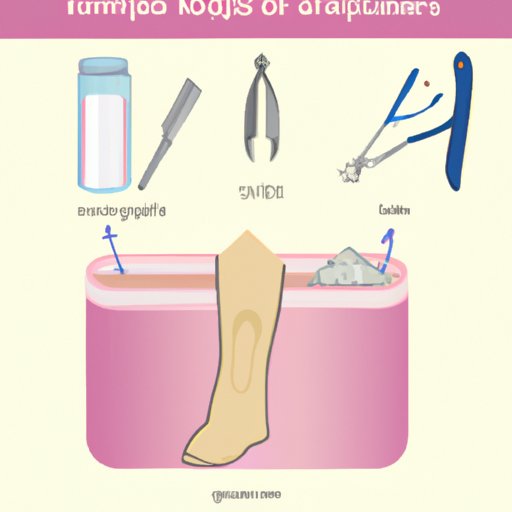Introduction
Ingrown hair is one of the most common skin conditions that can occur in the pubic area. It occurs when a strand of hair grows back into the skin instead of up and out. This can cause redness, itching, and irritation in the affected area. It’s important to know how to properly care for an ingrown hair to avoid further irritation and potential infection.
Use a Warm Compress
A warm compress can be used to soothe the affected area and help soften the skin. To do this, simply soak a clean cloth in warm water and apply it to the affected area for 5-10 minutes at a time. This will help open the pores, reduce inflammation, and make it easier to remove the ingrown hair.
Exfoliate
Exfoliation is an important part of getting rid of ingrown hairs. Exfoliating helps remove dead skin cells, unclog pores, and prevent future ingrown hairs. You can do this by using a gentle scrub or loofah in the shower. Gently scrub the affected area in a circular motion for 1-2 minutes and then rinse off with lukewarm water.
Apply an Antiseptic
Using an antiseptic after exfoliating can help reduce inflammation and prevent infection. There are several types of antiseptics available, such as benzoyl peroxide, tea tree oil, and salicylic acid. Apply a small amount of the chosen antiseptic to the affected area and leave on for 10 minutes before rinsing off.
Use Tweezers
In some cases, tweezers may be necessary to remove the ingrown hair. Before doing this, make sure to sterilize the tweezers with rubbing alcohol and wear gloves to protect your hands. Gently grasp the edge of the ingrown hair and pull it out in the direction of hair growth. If the hair does not come out easily, stop and seek medical help.
Shave Correctly
One of the best ways to prevent ingrown hairs is to shave correctly. Use a sharp razor and shave in the direction of hair growth. Avoid going over the same area multiple times, as this can irritate the skin and cause more ingrown hairs. After shaving, rinse the area with cold water and apply a moisturizer to soothe the skin.
Use Creams
There are also several creams available that can help reduce inflammation and promote healing. These include hydrocortisone cream, witch hazel, and aloe vera gel. Apply a thin layer of cream to the affected area twice a day for best results.
Seek Medical Help
If the ingrown hair does not go away after trying the above methods, it’s best to seek medical help. A doctor can provide more specialized treatment, such as antibiotics or steroid injections. They can also help determine if the ingrown hair is a sign of a more serious condition, such as an infection or cyst.
Conclusion
Ingrown hair on the vagina can be uncomfortable and embarrassing, but it doesn’t have to be. By following the steps outlined in this article, you can quickly and effectively get rid of ingrown hairs. Remember, if the ingrown hair persists or worsens, it’s best to seek professional medical help.


